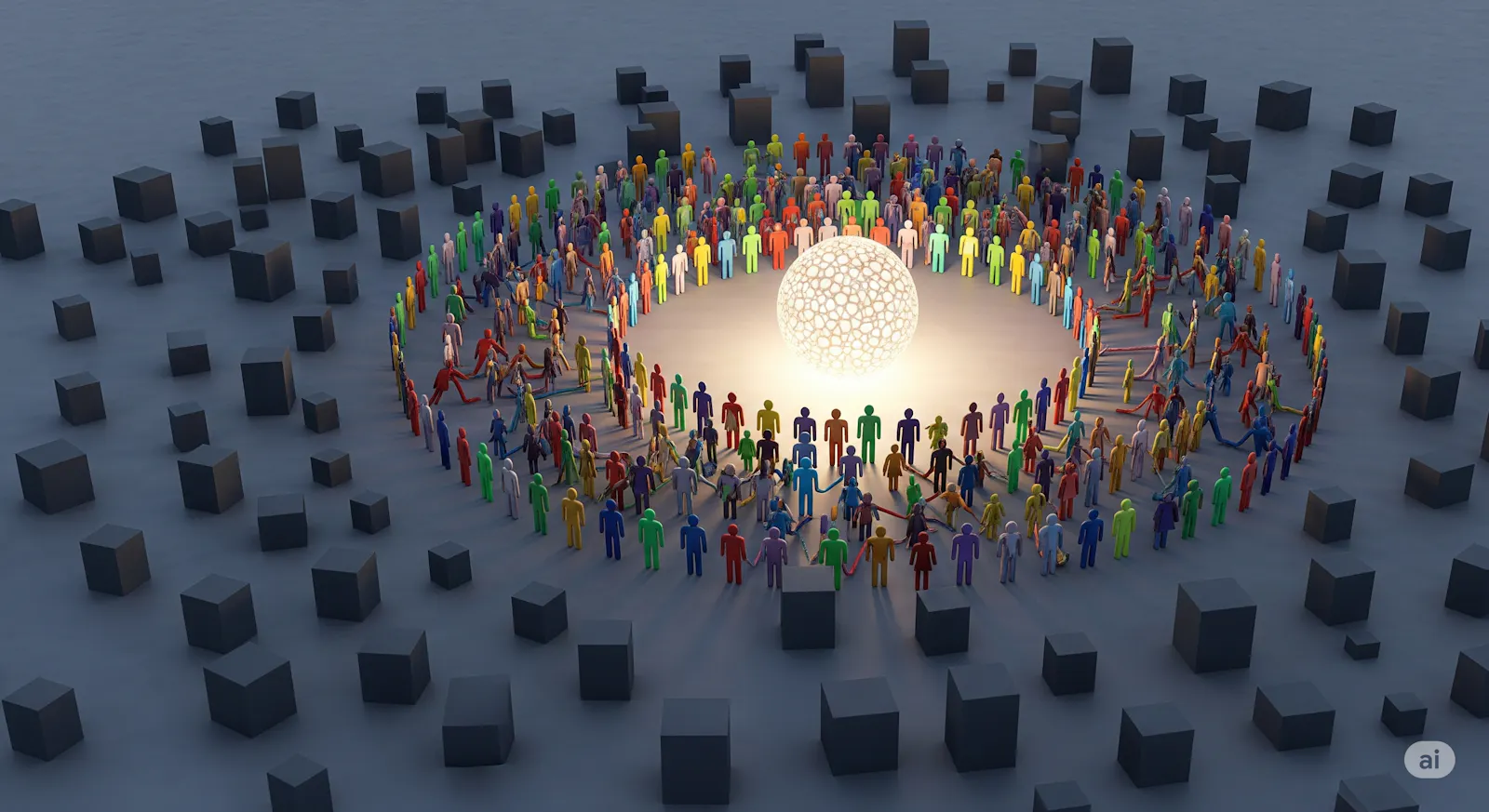Your Product is a Commodity. Your Community Isn't.

How your Community is building the moat.
The playbook for growing a software company has been in constant flux. We’ve seen the era of massive sales teams give way to the promise of product-led growth (PLG). The new mantra was that a superior product, a freemium tier, and slick self-serve onboarding would be the ultimate competitive advantage. It was a powerful idea for a new era, and for a while, it worked.
But let's be honest with ourselves. It's 2025, and PLG isn't the silver bullet it used to be.
The SaaS market is brutally crowded. Customer acquisition costs are through the roof. Your competitor can—and will—copy your killer feature in a matter of weeks. When every product looks the same and offers a free trial, the product itself is no longer a durable competitive advantage. It’s a commodity.
So, where’s the moat? What’s the one thing you can build that can’t be easily replicated?
It’s your community.
I don’t mean a dusty old forum for support tickets. I’m talking about a living, breathing ecosystem of users who are invested in your success because it’s tied to their own. The go-to-market strategy of today isn't just product-led; it's Community-Led Growth (CLG). It’s the human layer that makes a great product unbeatable.
The Flywheel You Can't Afford to Ignore
Think about how community supercharges every part of your business. It’s not a single function; it’s a flywheel that gathers momentum over time.
An Authentic Marketing Engine: A recommendation from a peer in a Slack channel is infinitely more powerful than any ad you can buy. Your most passionate users become your most effective salespeople, and they work for free. They write tutorials, answer questions on Reddit, create templates, and tell their bosses why your tool is the one to bet on.
Your Retention Secret Weapon: A customer might churn for a product that’s 10% cheaper, but will they leave behind the network of peers they rely on? Will they abandon the social capital they’ve built? Unlikely. When a user feels like they belong, their relationship with you transcends the transactional. They’re not just a customer; they’re a member. That’s a bond that’s hard to break.
An Unfiltered Innovation Pipeline: Forget expensive focus groups. Your community is a 24/7 R&D department. They will tell you exactly what they need, what’s broken, and what they’d be willing to pay more for. They’ll come up with use cases for your product that your own team never dreamed of. By listening, you de-risk your entire product roadmap.
Support That Actually Scales: Your support team can’t be online at 2 a.m. when a user in a different timezone has a critical question. But another user can. A well-run community becomes a self-service knowledge base where users help each other, deflecting countless support tickets and saving you a fortune in operational costs.
There's No One-Size-Fits-All Playbook
Companies execute this strategy in different ways, tailoring it to their product and market.
For some, particularly in the productivity space, the approach is decentralized. They don’t try to force everyone into a single company-owned platform. Instead, they find where their users are already gathering—on Reddit, Discord, or Facebook—and empower the leaders in those spaces. They create ambassador programs, giving superfans early access to features and a direct line to the product team. The result is a sprawling ecosystem that feels organic and user-owned, because it is.
For more complex, enterprise-grade platforms, the model is often a centralized universe. The community becomes a center for education, certification, and career growth. It’s not just about learning to use the software; it’s about becoming a certified professional, which makes that person more valuable to their company. The software becomes intertwined with their professional identity. That’s a moat so deep and wide, competitors can’t even see the other side.
And others take an integrated approach, weaving community into the fabric of the customer journey. The community isn’t a separate destination; it’s integrated directly into their marketing, sales, and service hubs. It’s where you go for peer support, product feedback, and advanced education—all in one place.
The Future is Human, Powered by AI
I know what some of you are thinking: This sounds great, but it doesn’t scale.
That’s where AI comes in. AI is the ultimate co-pilot for community managers. It will handle the grunt work: moderating spam, analyzing sentiment in conversations, and personalizing content for thousands of members at once. It will identify at-risk users before they churn and highlight trending topics for your product team.
But here’s the paradox: as AI automates the mundane, genuine human connection will become the most valuable and scarce resource. An over-reliance on AI will create a sterile experience that feels efficient but empty.
The winners of the next decade will master a hybrid approach. They will use AI for scale, freeing up their human team to do what humans do best: build real relationships, facilitate nuanced conversations, and provide empathy. AI will handle the 90% of repeatable interactions, so your team can focus on the 10% that are transformational.
If you’re a founder, stop thinking of community as a marketing expense. It’s not. It’s the most critical, value-generating asset you can build.
Start today. It doesn’t have to be a massive platform. Start a Slack group. Invite your first ten customers. Be the first community manager yourself. Listen more than you talk.
And build a moat that no amount of venture capital can cross.


